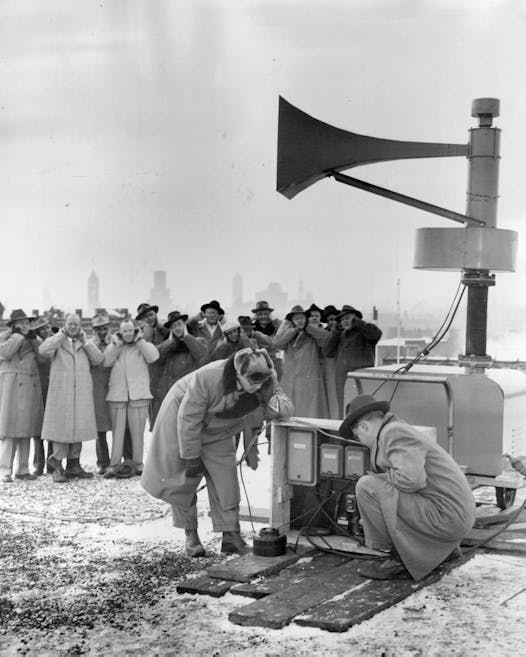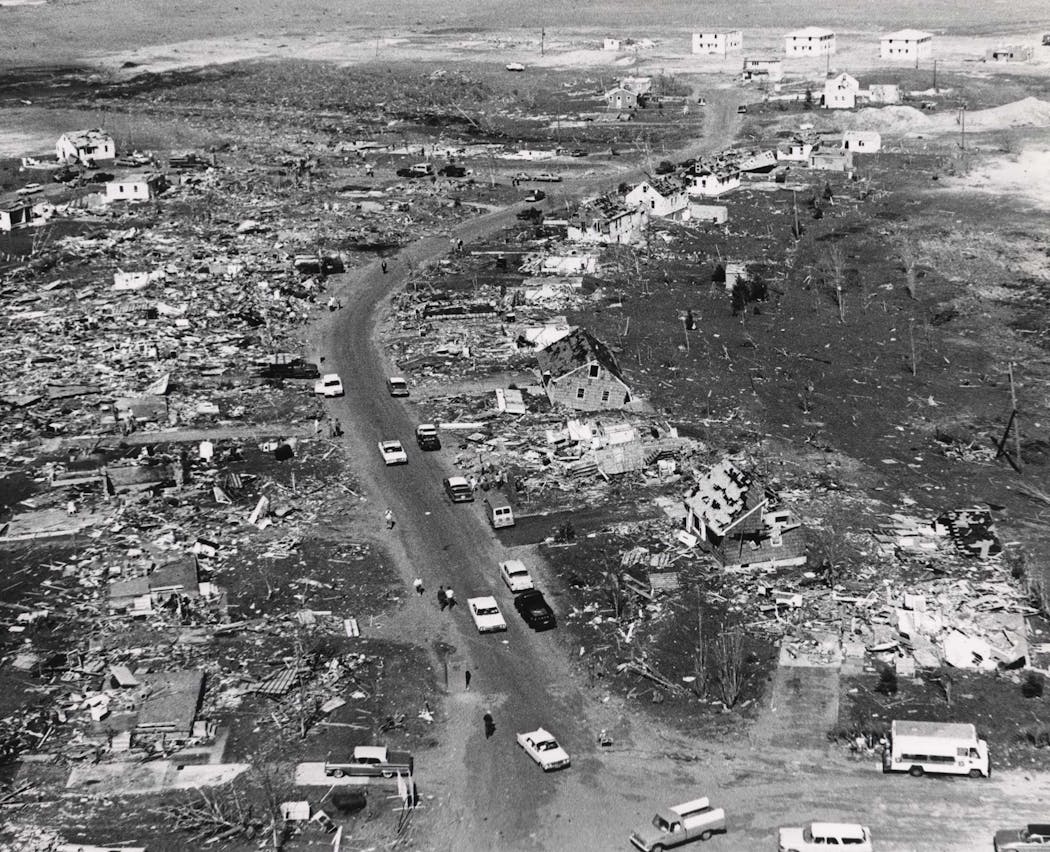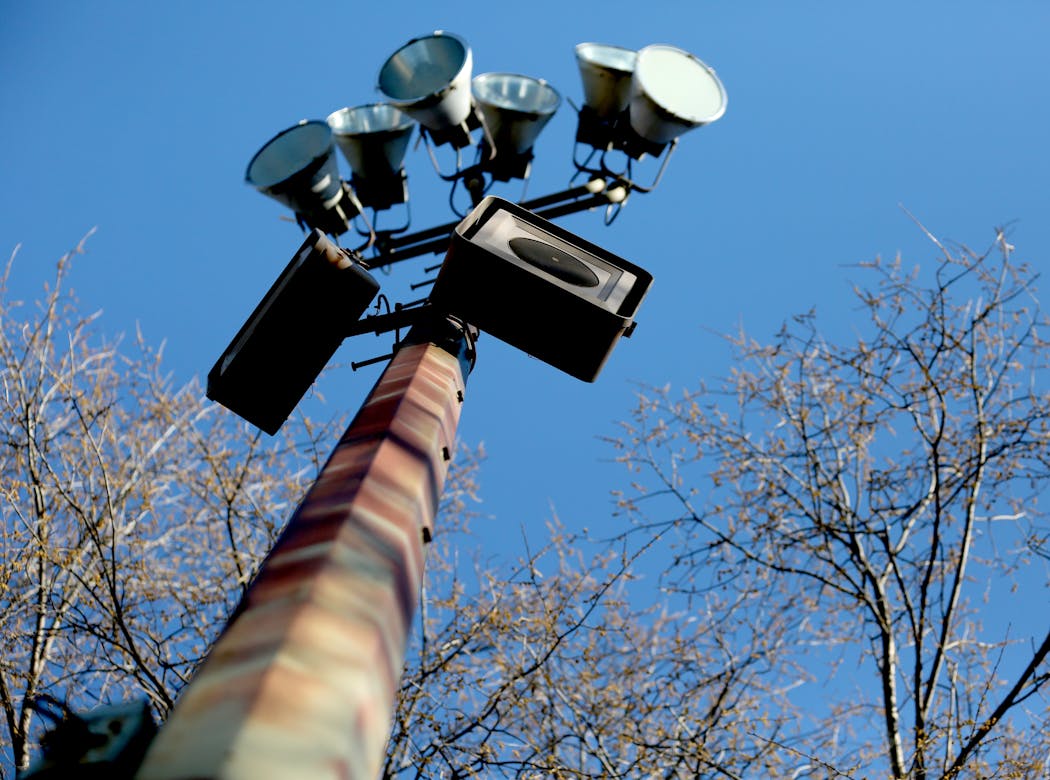Why does Minnesota test tornado sirens on the first Wednesday of the month?
Listen and subscribe to our podcast: Via Apple Podcasts | Spotify | Stitcher
The wail of sirens in the distance means one thing to most Minnesotans: It must be Wednesday.
Testing tornado sirens at 1 p.m. on the first Wednesday of the month is a local tradition. But reader Andrew Engen wanted to know the origins of this cacophonous custom, which recently startled a New York-based cable news anchor on live television.
"It's a little excessive seeming — having so many tornado drills," Engen said. "Was there some horrible disaster? What happened? Why do we do this?"
He sought answers from Curious Minnesota, the Star Tribune's community reporting project fueled by great questions from inquisitive readers.
When the Twin Cities first installed large networks of sirens and began testing them in the 1950s, it wasn't to alert people about tornadoes and severe weather. Instead, the concern was complete annihilation from a Soviet atomic bomb.
Fears of a large-scale attack loomed large in Minnesota and across the country after the Soviet Union tested its first nuclear bomb in 1949. The Soviet threat spurred the creation of civil defense agencies at the local, state and federal level, which captured the public's attention with complex plans to ward off disaster.
The likelihood of Soviet bombers crossing the North Pole to reach America meant that Minnesota was on the front lines, said Dave Kenney, a writer who has researched civil defense in Minnesota. So a public warning system was developed, along with plans to evacuate the urban core if necessary.
"Into the mid-1950s at least, there was this belief on the part of the government that we could outrun these things because we would have time," Kenney said.
Minneapolis had installed a massive 5,500-pound air raid siren atop the (since demolished) Northwestern National Bank building during World War II, but deactivated it in 1947. In the early 1950s, the city built a network of sirens to alert the public to an impending attack.
A siren sounding could mean people should either evacuate or take cover, depending on the type of sound and instructions on emergency radio broadcasts.
Siren testing occurred sporadically as the sirens became active, but newspaper accounts indicate that monthly 11 a.m. Wednesday tests began in Minneapolis in 1954.
Testing was moved later in the day the following year because many sirens were located on school buildings, and the earlier testing time scared kindergartners, according to a 1955 Minneapolis Tribune article. By the summer of 1955, when statewide monthly tests began, it occurred on the first Wednesday of the month at 1 p.m. — as it does today.
The federal government, which had helped pay for the city's sirens, required the regular testing, Minneapolis' civil defense director Walter Halstead explained in 1955. But the testing also helped detect deficiencies in the system, he said.
Civil defense planning shifted away from evacuation in the late 1950s, Kenney said, when the Soviets began testing intercontinental ballistic missiles. Advance notice of a missile attack would be limited, so the public was advised to protect themselves from radiation in fallout shelters.
"Planners at that point were hoping that more and more people would be building their own shelters so they could get to them quickly," Kenney said.
Civil defense officials announced in 1959 that the sirens would also be used for tornado warnings. The first time Twin Cities sirens were activated for an actual emergency was in 1965, when a severely destructive tornado outbreak descended on the metro area.
"Tornado survivors credited air raid sirens and radio news bulletins for warning them of danger last Thursday, and their grateful comments poured into state Civil Defense headquarters today," the Minneapolis Star reported in 1965.
Today, the monthly tests have a dual purpose, said Eric Waage, director of emergency management for Hennepin County. They acclimate the public to the sound of the sirens and help ferret out sirens that have stopped working — in conjunction with regular non-audible testing.
"The whole idea behind a drill is that you really need to understand how your siren sounds and whether you're going to be able to hear it in different places," Waage said.
Outside of the testing period, a siren is a warning to get inside and seek further information about the emergency. Minnesota sees the most tornadoes between May and August, said Todd Krause, warning coordination meteorologist with the National Weather Service in Chanhassen.
In recent years, emergency alerts have been increasingly broadcast directly to people's cellular phones. Waage said that is an important but very fragile system, since cellular networks can be easily overloaded in an emergency and towers can be destroyed or lose power.
"It may not survive a first wave," Waage said. "And you can get two or three waves of storms that come in."
Each county oversees the testing of its emergency sirens. Waage said a recent survey indicates that nearly all counties are testing them on the first Wednesday of the month.
The sirens can warn of other dangers in addition to tornadoes. Hennepin County recently activated its sirens for softball sized hail, Waage said. Elsewhere in the country, sirens are used to warn of tsunamis, earthquakes, flooding, wildfires, hurricanes and other hazardous events, according to a 2017 National Institute of Standards and Technology report.
That report found that the majority of jurisdictions surveyed tested their sirens once per month. Hawaii tests sirens at 11:45 a.m. on the first workday of the month, for example. The Kansas City area tests sirens at 11 a.m. on the first Wednesday of the month.
"We do fire drills – they're mandated. In schools, they do the active shooter drills," Waage said. "This is no different. This is just a time to say, ... 'What would you do now if this were real?'"
If you'd like to submit a Curious Minnesota question, fill out the form below:
Read more Curious Minnesota stories:
What was the most destructive tornado in Minnesota history?
Why do we have water towers and what do they do?
Where does 'uff da' come from, and why do Minnesotans say it?
Did German prisoners of war really work on Minnesota farms during World War II?
Where did streetcars once travel in the Twin Cities suburbs?
Why did Minneapolis tear down its biggest train station?
![The electric car charging stations at Lebanon Hills Regional Park on Monday, September 21, 2015 in Eagan, Minn. ] RENEE JONES SCHNEIDER • reneejones](https://arc.stimg.co/startribunemedia/JDQKBL7NFJ7C6P53VIQEOLV6BI.jpg?w=600&h=600&auto=format%2Ccompress&cs=tinysrgb)






